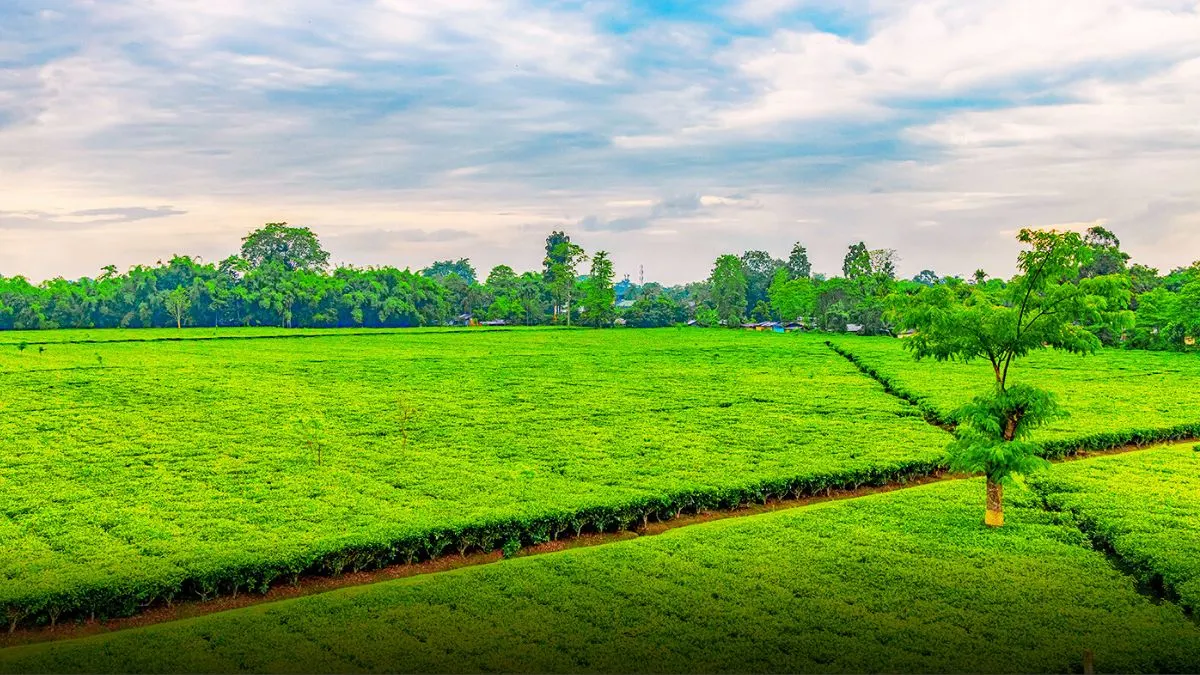Tucked away in the heart of the mighty Brahmaputra River lies one of Northeast India’s most unique spiritual and geographical wonders — the Umananda Temple . Perched on Peacock Island , also known as Umananda Island , this ancient Shiva temple is not just a place of worship but also the center of a fascinating blend of history, mythology, and natural beauty.
As the smallest inhabited river island in the world , Umananda Island offers visitors a rare mix of tranquility, heritage, and scenic charm. Let’s explore what makes this temple such a special destination.
Historical Origins and Construction
The Umananda Temple , locally known as Umananda Devaloi , was built in 1694 CE by Garhgayan Sandikai Borphukan under the orders of Ahom King Gadadhar Singha . This temple stands as a testament to the architectural brilliance and devotion of that era.
According to historical records, the original structure covered approximately 13 bighas and 3 kathas of land, as noted in a British survey conducted in 1886. Despite its small size, the island has played a significant role in the religious and cultural life of Assam.
Interesting fact: The temple survived a major earthquake in 1897 , thanks to the efforts of a local merchant who funded its complete restoration. This act ensured the continuation of its spiritual legacy for generations to come.
During the rebuilding phase, artisans enhanced the temple with new elements like Vaishnavi scripts inscribed on the walls and intricate carvings etched directly into the island’s rocks. These additions enriched the temple’s character, blending both Shaivism and Vaishnavism traditions of Hinduism.
Mythological Significance
The temple’s name “Umananda ” carries deep meaning — derived from “Uma ” (another name for Goddess Parvati) and “Ananda ” (meaning joy or bliss). According to legend, Lord Shiva created this island especially for Parvati’s happiness, making it a sacred space of divine love.
Another popular myth tells of Kamadeva , the god of love, interrupting Shiva’s meditation. Enraged, Shiva opened his third eye and reduced Kamadeva to ashes, giving the island its alternate name — Bhasmacala or “Hill of Ashes.” This dramatic episode adds to the island’s mythological allure.
The Kalika Purana , an important Hindu scripture, further enriches the temple’s lore by mentioning that Lord Shiva imparted sacred knowledge to Parvati here, sprinkling holy ash (bhasma) across the island.
👉 You might also enjoy reading: Spiritual Temples of Northeast India
Geographical Setting and Accessibility
What truly sets Umananda Temple apart is its location — the smallest inhabited river island in the world , floating serenely in the middle of the Brahmaputra River near Guwahati, Assam . The British named it Peacock Island due to its shape resembling a peacock’s spread feathers.
To reach the temple, visitors can take a short 10-minute boat ride from Umananda Ghat , located near the Guwahati High Court. This journey itself adds to the experience, offering breathtaking views of the river and surrounding hills.
Despite being surrounded by water, the temple remains accessible year-round, drawing pilgrims and tourists alike who are eager to witness its spiritual and scenic beauty.

Religious Practices and Festivals
At the heart of Umananda Temple’s identity is the worship of Lord Shiva , revered here as Umananda Mahadeva — the embodiment of joy for Uma (Parvati).
The temple follows traditional Shaivite rituals and is especially vibrant during Mahashivaratri , when devotees gather in large numbers to offer prayers and participate in night-long devotional activities.
Mondays are considered particularly auspicious at the temple, aligning with the broader Hindu tradition of dedicating Mondays to Lord Shiva.

Architectural Features and Artistic Legacy
The architecture of Umananda Temple beautifully reflects the Assamese style , adorned with exquisite carvings of deities such as Ganesha, Shiva, Parvati, and Vishnu .
Following the 1897 restoration, new Vaishnavi scripts were added to the temple walls, and artists carved figures into the rocks of the island. These artistic interventions have become integral to the temple’s identity, preserving both its religious and aesthetic values.
Environmental and Cultural Importance
Beyond spirituality, Umananda Island holds ecological significance. It was once home to golden langurs , an endangered species of primates native to the region. Though no longer present, their historical presence highlights the island’s environmental importance.
Today, Umananda Temple serves as a bridge between modern urban life and ancient traditions, standing proudly amidst the bustling city of Guwahati while maintaining its serene spiritual aura.
Final Thoughts
Umananda Temple is more than just a shrine — it is a symbol of resilience, faith, and cultural richness. As the smallest inhabited river island in the world , it captivates travelers and devotees with its unique geography, profound mythology, and timeless beauty.
Whether you’re visiting for spiritual reasons, historical interest, or simply to admire the view, a trip to Umananda Temple promises an unforgettable experience.
💬 Have you visited Umananda Temple? Share your experience below!
📌 Don’t forget to share this post with fellow travelers and temple enthusiasts!
Frequently Asked Questions (FAQ) About Umananda Temple
Q1: What is Umananda Temple known for?
A: Umananda Temple is known for being located on Umananda Island , also called Peacock Island , which is recognized as the smallest inhabited river island in the world . The temple is dedicated to Lord Shiva and has deep religious, historical, and mythological significance
Q2: Where is Umananda Temple located?
A: Umananda Temple is located in the middle of the Brahmaputra River near Guwahati , in the Indian state of Assam
Frequently Asked Questions (FAQ) About Umananda Temple
Q1: What is Umananda Temple known for?
A: Umananda Temple is known for being located on Umananda Island , also called Peacock Island , which is recognized as the smallest inhabited river island in the world . The temple is dedicated to Lord Shiva and has deep religious, historical, and mythological significance
Q2: Where is Umananda Temple located?
A: Umananda Temple is located in the middle of the Brahmaputra River near Guwahati , in the Indian state of Assam
Q3: How do I reach Umananda Temple?
A: To reach the temple, visitors can take a short 10-minute boat ride from Umananda Ghat , which is located near the Guwahati High Court
Q4: Is there any mythological significance of Umananda Temple?
A: Yes, according to Hindu mythology, Lord Shiva created the island especially for his consort Parvati’s happiness. The island is also known as Bhasmacala , where Shiva is believed to have reduced Kamadeva (the god of love) to ashes with his third eye
Q5: Are there any steps to climb to reach the temple?
A: Yes, there are approximately 50 steps leading up to the temple. However, they are not steep, and there is a resting platform after about 30 steps, making it manageable for most visitors
Q6: What is the historical background of Umananda Temple?
A: The temple was built in 1694 CE by Garhgayan Sandikai Borphukan under the orders of Ahom King Gadadhar Singha. It was severely damaged in an earthquake in 1897 but was later restored by a local merchant
Q7: What is the architectural style of Umananda Temple?
A: The temple showcases traditional Assamese architecture , with intricate carvings of Hindu deities like Ganesha, Shiva, Parvati, and Vishnu. During its restoration, Vaishnavi scripts were also added to the walls
Q8: Is Umananda Island home to any wildlife?
A: In the past, Umananda Island was home to golden langurs , an endangered species of primates native to the region. However, they are no longer found on the island
Q9: What festivals are celebrated at Umananda Temple?
A: The most significant festival celebrated here is Mahashivaratri , dedicated to Lord Shiva. Mondays are considered particularly auspicious for worship at the temple










x4vhs8